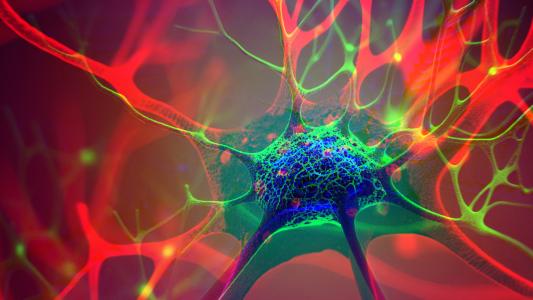Swedish researchers have developed a gel that transforms into a soft electrode once inside the body of a living organism — and it might one day end the need for invasive electrode implantation surgeries.
The challenge: There are many health problems that can be treated by implanting electrodes into patients and sending low levels of electricity into their bodies — spinal stimulation can reverse paralysis and relieve back pain, for example, while deep brain stimulation can help with everything from depression to Parkinson’s.
But getting electrodes into the brain or positioned next to the spinal cord requires invasive surgery, and even the smallest, most flexible electrodes available today cause scarring and inflammation that degrades their performance over time.
“Our results open up for completely new ways of thinking about biology and electronics.”
Hanne Biesmans
What’s new? Researchers at Linköping University, Lund University, and the University of Gothenburg have now developed an injectable gel that contains the ingredients for an electrically conductive polymer, as well as molecules that react to natural sugars — like glucose or lactate — in the body.
When the gel is injected into a living organism, the body’s sugars set off a chain reaction that turns the gel into an electrically conductive material, which is soft, flexible, and biocompatible.

To demonstrate how the gel might be used to create biocompatible electrodes in people, the researchers injected it into the nerve tissue of leeches, as well as the brains, hearts, and tail fins of zebrafish.
“The beautiful thing is you can see it: The zebrafishes’ tail changes color, and we know that blue indicates a conducting polymer,” researcher Xenofon Strakosas told Science News. “The first time I saw it, I thought ‘Wow, it’s really working!’”

The caveats: Getting electrodes into the body is just the first step to treating patients with stimulation therapies — we then need to apply a charge, and it’s not clear yet how to connect these soft electrodes to a power source.
While the zebrafish didn’t seem to respond negatively to the electrodes — even the ones in their brains — the researchers only studied them for three days. Longer studies, with more human-like animals, will be necessary to see how living tissue responds to the gel over longer periods of time.
Looking ahead: This research suggests that doctors might one day be able to treat patients with stimulation therapies without requiring them to undergo invasive surgery — and perhaps enable electrodes to work longer, without causing scarring.
“Our results open up for completely new ways of thinking about biology and electronics,” said researcher Hanne Biesmans. “We still have a range of problems to solve, but this study is a good starting point for future research.”
We’d love to hear from you! If you have a comment about this article or if you have a tip for a future Freethink story, please email us at [email protected].





